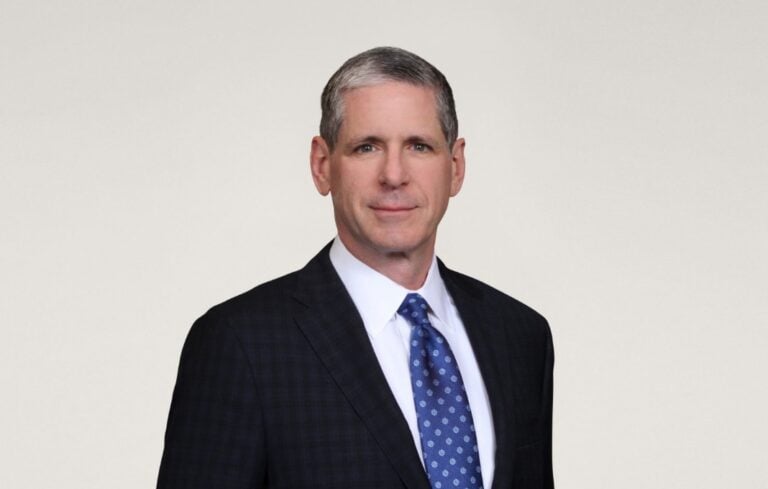
 If you want to get a little insight into the kind of leader you are, try this visualization technique devised by Tim Elmore, CEO of Growing Leaders, Inc., the Atlanta-based non-profit organization he founded to develop emerging leaders. The next time you walk into a meeting or enter a community, a team or any sort of group, ask yourself whether you are a thermometer or a thermostat. Picture the two things, but more importantly, picture their different purposes: a thermometer tells you what the temperature is, or more broadly, what the climate is. A thermostat, on the other hand, actually sets the climate.
If you want to get a little insight into the kind of leader you are, try this visualization technique devised by Tim Elmore, CEO of Growing Leaders, Inc., the Atlanta-based non-profit organization he founded to develop emerging leaders. The next time you walk into a meeting or enter a community, a team or any sort of group, ask yourself whether you are a thermometer or a thermostat. Picture the two things, but more importantly, picture their different purposes: a thermometer tells you what the temperature is, or more broadly, what the climate is. A thermostat, on the other hand, actually sets the climate.
“So which are you,” asked Elmore in a recent episode of Corporate Competitor Podcast. “Do you take the temperature of the room, look around, try not to do something stupid and wonder, ‘What do I do here?’ Or do you choose to step over the line and be influential and say, “I am going to set the temperature on this team?’”
The thermometer versus thermostat is an example of one of Elmore’s “habitudes,” which he made the subject of a book by the same name, Habitutes: Images that Form Leadership Habits and Attitudes, one of 37 books he has published. “We think in pictures,” explained Elmore. “So the premise is that if you can see it, you can feel it and then start talking about it, which invites you to do something about it—whatever it is.”
A former track and field competitor himself, Elmore has helped teams at such sports powerhouses as Ohio State University and Louisiana State University and at corporate juggernauts such as Home Depot and Chick-fil-A improve team performance by becoming better at visualizing excellence, while learning to embrace ideas that may seem contradictory at first but can lead to great insight. In 2021, John C. Maxwell named Elmore to his list of four distinguished writers and motivational speakers comprising Maxwell’s League of Extraordinary Leaders. Maxwell formed the League to add fresh voices as his international organization looks to the future.
In our conversation, we explore some of the great paradoxes inherent in how great leaders think and behave. These paradoxes, which appear in his book The 8 Paradoxes of Great Leadership, include such observations as:
• 5:00 Why we are hard-wired to take shortcuts.
• 8:00 The difference between rivers and floods and how it applies to building teams.
• 13:00 How to cross the discipline bridge, so you do not rely on luck.
• 15:00 How to be both confident and humble.
• 22:00 Why EQ impacts success more than IQ.
• 25:30 How to leverage your vision and blind spots.
• 30:00 How to develop bold and creative teams.
• 35:00 What Martin Luther King, Jr. teaches us about leading with absence and presence.
“We live in an either/or world,” observed Elmore. “It’s just polarized right now: you’re either left or right, religious or atheist and so on. But when I studied leaders who were uncommonly effective, I noticed they actually combined ideas and practices that seemed contradictory or paradoxical.” For example, when they were in a meeting with a group of people, they needed to speak as if they believed they were right, but they listened to others as if they believed they might be wrong.
“Doing so makes them curious,” Elmore said. “Humility made them listen better rather than just wait for the next turn to say something.”
I hope you will kick off your new year by taking thirty minutes out of your day to listen to our conversation. I think you’ll find it rewards you with dividends, not to mention habitudes, all year long.
Check out the full Corporate Competitor Podcast interview archive and subscribe to new episodes.




Chief Executive Group exists to improve the performance of U.S. CEOs, senior executives and public-company directors, helping you grow your companies, build your communities and strengthen society. Learn more at chiefexecutivegroup.com.
0

1:00 - 5:00 pm
Over 70% of Executives Surveyed Agree: Many Strategic Planning Efforts Lack Systematic Approach Tips for Enhancing Your Strategic Planning Process
Executives expressed frustration with their current strategic planning process. Issues include:
Steve Rutan and Denise Harrison have put together an afternoon workshop that will provide the tools you need to address these concerns. They have worked with hundreds of executives to develop a systematic approach that will enable your team to make better decisions during strategic planning. Steve and Denise will walk you through exercises for prioritizing your lists and steps that will reset and reinvigorate your process. This will be a hands-on workshop that will enable you to think about your business as you use the tools that are being presented. If you are ready for a Strategic Planning tune-up, select this workshop in your registration form. The additional fee of $695 will be added to your total.

2:00 - 5:00 pm
Female leaders face the same issues all leaders do, but they often face additional challenges too. In this peer session, we will facilitate a discussion of best practices and how to overcome common barriers to help women leaders be more effective within and outside their organizations.
Limited space available.

10:30 - 5:00 pm
General’s Retreat at Hermitage Golf Course
Sponsored by UBS
General’s Retreat, built in 1986 with architect Gary Roger Baird, has been voted the “Best Golf Course in Nashville” and is a “must play” when visiting the Nashville, Tennessee area. With the beautiful setting along the Cumberland River, golfers of all capabilities will thoroughly enjoy the golf, scenery and hospitality.
The golf outing fee includes transportation to and from the hotel, greens/cart fees, use of practice facilities, and boxed lunch. The bus will leave the hotel at 10:30 am for a noon shotgun start and return to the hotel after the cocktail reception following the completion of the round.